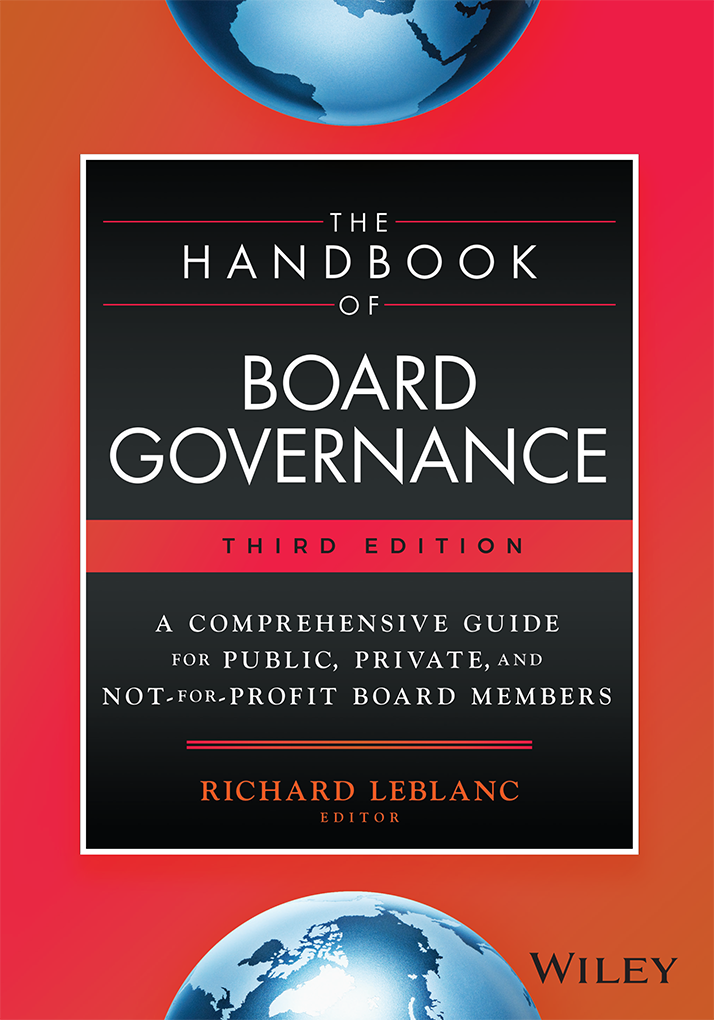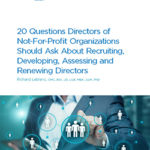Here is a hypothetical situation that I have encountered many times.
I am invited to observe and assess a board. When I do, I immediately see the red flags. I make hard-hitting recommendations, which have included the CEO and certain directors being fired.
Why does it take me to do what the board should have been doing much earlier?
Boards can be very defensive, and even in denial to what is blindingly obvious. “We missed it” or “it was a rogue employee” is their common defense.
Boards are now asking, “Could a Harvey Weinstein situation happen to us?”
The board’s role in overseeing corporate culture, potential harassment, and other conduct risk is increasingly being turned to by boards and regulators.
Here are twelve suggestions for boards to oversee conduct risk properly within their organizations. The best boards I work with do all of this. The worst do not.
1. Act on your hunch.
If you have a question or concern, most of the board shares the same concern. Ask the question, and ask the second question. And if you don’t like what the answer is, press further. Where there is smoke, there is often fire. I have interviewed over a thousand directors over my career. The most common regret directors have is twofold: (i) I didn’t speak up when I should have; and (ii) I didn’t fire the CEO soon enough. One corporate secretary after a recent public scandal told me, “when the board does not ask questions, we have succeeded.”
2. Insist on proper whistle-blowing.
Many whistle-blowing programs are flawed. They are not anonymous, protected, independent, rewarded or remedied. That is the board’s fault. Not surprisingly, people (especially women) do not come forward for fear of retaliation and career harm. If you think conduct risk is not occurring within your organization, you are wrong. It is just a question of degree. Bad news needs to rise, and go around management and directly to boardrooms. If bad news does not rise to the board, it does not go away. It gets worse. Good boards insist on proper channels directly to them.
3. Renew your board regularly.
New directors see things that long-serving directors may not see or may be accustomed to. A fresh set of eyes can be invaluable. Have term limits for directors or regulators will impose them for you as is being done in several countries. Have a diverse board. Homogenous boards engage in group-think and do not ask tough questions.
4. Do rigorous interviews and background checks.
Ensure that employees, agents, management and directors go through thorough and ongoing background, reference, social media, personality, criminal and financial checks and testing. People’s personality will not change. If you do not know someone’s faults, you have not done your homework, and they are a risk to your reputation.
5. Remove management regularly from boardrooms.
Remove management from a portion of each board and committee meeting. Have a safe space so directors can speak confidentially. These “in camera” sessions are the main way that directors voice their concerns not within earshot of management. In camera sessions are the greatest contributor to board effectiveness, directors tell me.
6. Act immediately at the first sign of an ethical lapse.
The standard you walk by is that standard you accept. When you see discrimination, disparagement, or unfair treatment, call it out. Speak up. And when necessary, fire the CEO or senior manager at the first sign of a lack of ethics. Otherwise, you signal to the entire organization what is acceptable to you. Boards have suffered by not acting when they should have. And if your board does not act when it should, resign.
7. Receive dis-confirming information on company culture and executives.
If you get all your information from management, you are only hearing one side. Receive your own social media analytics, look at chat rooms, hear from employees, use google alerts, commission independent reviews, hear from reporters and analysts, walk around, and listen to what you hear and observe.
This does not mean that you are micro-managing, only that you are getting full information. If management tries to block you or dominate your information flow, that is a red flag.
8. Receive employee feedback.
Retain survey providers to conduct employee morale surveys that are directly provided to the board and untampered with by senior management. Ask for qualitative exit interview results, staff turnover rates and litigation compared to your peers. Consider putting an employee on your board, or having an advisory committee or a designated director to represent the employee viewpoint.
9. Look at how employees are paid.
People behave and take risks based on how they are paid, including customer-facing employees all the way to senior management and your CEO. Look at how pay incents conduct. Make sure that employee engagement forms a healthy portion of CEO incentive pay.
10. Protect yourself and the company.
Benchmark management contracts for conduct and ethics clauses. Define just cause for dismissal to include ethics. Have fair treatment form part of all employment contracts. Ensure your Code of Ethics and Diversity Policy are conditions for incentive pay to vest, and claw it back if you discover misconduct after the fact.
11. Benchmark your diversity and inclusion policy and practices.
Many human resource policies are legalistic and do not provide adequate examples and training. Train on unconscious biases. Provide examples of heterosexism, islamophobia and transphobia. Have voluntary, confidential self-identification of gender identity and LGBTTIQQ2A. Have a diversity and inclusion best practice presentation directly to the board of directors, as tone flows down from this.
12. Be vigorous in your fiduciary duty.
Management may play the trust, confidence or micromanaging card. Press on. Insist on behavioural and integrity controls, and independent auditing of these by the internal auditor, who should report directly to you, not management. Many conduct failures have happened because senior management blocked access to the auditors from the board. Have internal audit test the controls for culture and integrity (including complaints, reaction time, investigation protocols, record keeping and non-retaliation) and report directly to you on their findings.
Conclusion
Governance is changing. Board are becoming far more active and are investing significant time in their duties and responsibilities.
There are occasions where the best efforts will fail, but for the most part conduct failure happens when a board is complacent and fails to act when it should.
Dr. Richard Leblanc, Editor of The Handbook of Board Governance (Wiley, 2016), can be reached at rleblanc@boardexpert.com.












